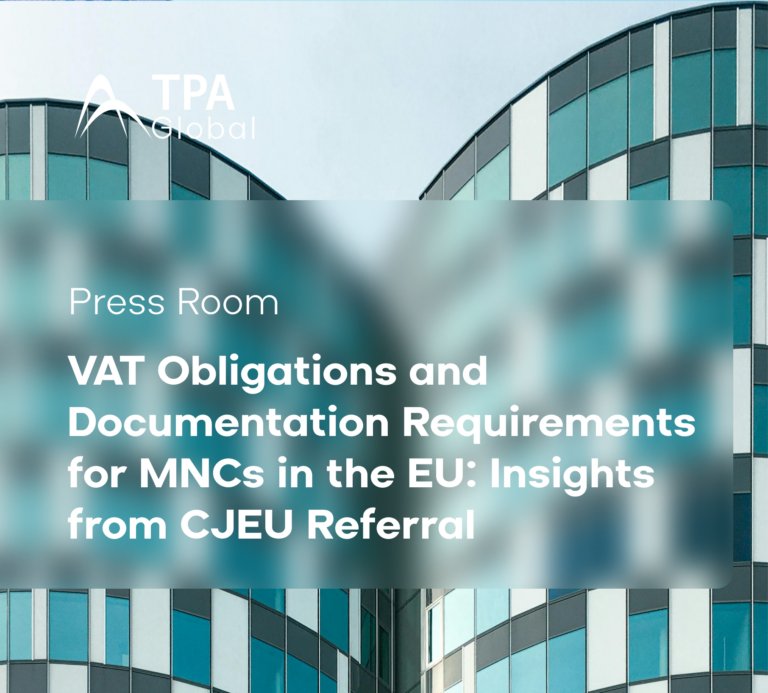In the world of international taxation, the push for a fair and balanced system continues with enthusiasm. Pillar One, the international tax reform initiative led by the Organization for Economic Co-operation and Development (OECD), is at the forefront of this transformation. In this article, we’ll look into the latest developments surrounding Pillar One’s Amount A and Amount B, as well as the Dutch position on this initiative.
Amount A: A New Taxing Right for the Digital Age
Pillar One’s Amount A is a cornerstone of international tax reform, designed to address the challenges posed by the digital economy. It aims to establish a novel taxing right for market jurisdictions, one that transcends traditional notions of physical presence and instead relies on a formulaic approach.
Amount A sets its sights on creating a more streamlined and simplified transfer pricing methodology, particularly concerning baseline marketing and distribution activities (BMDA). This is a significant shift from the convoluted transfer pricing rules that have puzzled tax professionals for years.
One of the key features of Amount A is the introduction of mandatory and binding dispute prevention and resolution mechanisms. These mechanisms are intended to mitigate the risks of multiple taxation and provide much-needed clarity in an increasingly complex tax landscape.
As multilateral negotiations on Pillar One continue, many countries are taking unilateral actions to tax digital businesses. These measures, which include Digital Service Taxes (DSTs), equalization levies, and new nexus-based levies, reveal dissatisfaction with Pillar One or skepticism about its potential success.
Amount A: Key Features and Provisions
Following the historic Outcome Statement in July 2023, the Multilateral Convention (MLC) package was released in October 2023. The MLC contains several vital components:
- Scope of Taxing Right: Amount A applies to multinational enterprises (MNEs) with revenues exceeding EUR 20 billion and profitability above 10%. It covers 25% of profits that exceed 10% of revenue, with a possible reduction in the revenue threshold to EUR 10 billion after seven years.
- Revenue Sourcing Rules: These rules determine how Amount A is allocated between market jurisdictions.
- Relief from Double Taxation: Mechanisms are in place to prevent double taxation.
- Tax Certainty: The MLC addresses issues related to tax certainty and provides a framework for its application.
- Eliminating Unilateral Measures: Commitment to removing specified unilateral measures upon the implementation of Amount A.
- Administration of Amount A: Simplified compliance rules are introduced, relying on a single entity within a covered group to make payments to market jurisdictions.
- Entry into Force: The MLC’s entry into force depends on ratification by at least 30 jurisdictions representing at least 60% of the ultimate parent entities of in-scope MNEs.
The MLC also includes provisions tailored to address the unique circumstances of developing countries. However, some countries, including India, Colombia, and Brazil, have expressed reservations, primarily related to the marketing and distribution safe harbor and withholding taxes.
To prevent unilateral measures from proliferating, a freeze on new DSTs and similar measures has been extended until the MLC’s entry into force. The critical mass of jurisdictions, including the United States, must sign the MLC before the end of 2023 for this extension to take effect.
Amount B: Simplifying Transfer Pricing
In addition to Amount A, significant progress has been made on Amount B in 2023. Amount B focuses on simplifying the application of the arm’s length principle to baseline marketing and distribution activities. The latest consultation document, released in July 2023, incorporated several recommendations and new inputs from stakeholders. The final report on Amount B is expected to be integrated into the OECD’s Transfer Pricing Guidelines by January 2024.
The Dutch Position: Pragmatism in Uncertain Times
The Dutch State Secretary of Finance’s recent communication with the Dutch legislative bodies sheds light on the Dutch perspective regarding Pillar One. While the Netherlands favors an international agreement through the MLC, it acknowledges the need for alternative solutions in case a global agreement is uncertain. An European solution is preferred over unilateral DSTs, which are deemed infeasible in the short term.
Takeaways and Tips for Stakeholders
As of October 2023, the implementation dates for Amount A and the extension of the DST freeze seem uncertain. Countries could introduce unilateral measures, including DSTs, from 1 January 2024, unless further agreements are reached.
In the absence of a comprehensive Pillar One agreement, some countries may follow the lead of the United Kingdom, Austria, France, Italy, and others in adopting or proposing unilateral measures. Multilateral DST proposals at the EU level might resurface.
Multinational enterprises must assess the potential impact of Pillar One and other unilateral measures on their tax positions.
For taxpayers, assessing the implications of Amount B rules on baseline marketing and distribution activities is already possible. Expert teams can help analyze and model the impact, offering strategies to mitigate potential challenges and complexities.
In conclusion, the future of international taxation is in flux, and Pillar One stands at the epicenter of this transformation. Stay tuned for further developments and be prepared to adapt to the evolving tax landscape.
To keep updated on news, visit our Global News Page.
Don’t miss our most recent updates and articles; follow us on LinkedIn.



